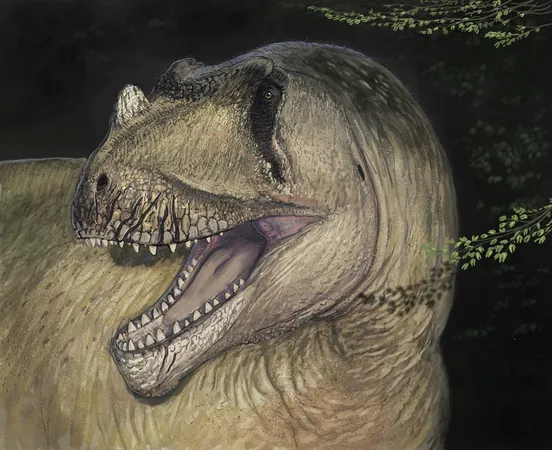
Groundbreaking Discovery: New Species of Cretaceous Predatory Dinosaur Unearthed from Historic Images!
2025-01-15
Author: Wei
Groundbreaking Discovery: New Species of Cretaceous Predatory Dinosaur Unearthed from Historic Images!
Paleontologists from SNSB and LMU have made a monumental discovery by identifying a previously unknown species of predatory dinosaur from North Africa's Cretaceous period, dating back approximately 95 million years. This extraordinary find is particularly significant because the original fossil from Egypt was tragically destroyed during World War II, specifically in an air raid 80 years ago.
The research team struck gold by analyzing archival photographs of the dinosaur skeleton taken prior to its destruction in 1944. The results of their study are published in the esteemed journal PLOS ONE.
The skeleton of this large predatory dinosaur was initially described by Munich-based paleontologist Ernst Stromer von Reichenbach, who excavated it in 1914 from the Bahariya Oasis in Egypt. The precious fossil was transferred to Munich shortly afterward and kept at the Bavarian State Collection for Paleontology and Geology, then located in the Old Academy in Munich. At the time, Stromer classified this magnificent beast as belonging to the genus Carcharodontosaurus, known as the shark-toothed lizard. Stretching approximately 10 meters long, it rivaled the infamous Tyrannosaurus rex, which roamed North America around the same period.
Tragedy struck on July 21, 1944, when the Old Academy building suffered catastrophic damage due to an Allied air raid, incinerating much of its collections, including Stromer’s Egyptian dinosaur fossils. For decades, the legacy of this colossal predator faded into obscurity, leaving behind only Stromer’s notes, illustrations, and scattered photographs.
In a remarkable turn of events, paleontology master's student Maximilian Kellermann stumbled upon new, unpublished images of the original skeleton during his research. These photos revealed critical anatomical features of the dinosaur, including parts of its skull, spine, and hind limbs. Together with experts like Prof. Oliver Rauhut from the Bavarian State Collection and Dr. Elena Cuesta from LMU, Kellermann closely examined these images and uncovered something astonishing.
"What we discovered in these historical photographs was truly unexpected. The fossil depicted differs greatly from other Carcharodontosaurus specimens found in Morocco. This led us to realize that Stromer’s original classification was inaccurate," Kellermann stated. They subsequently named the new species Tameryraptor markgrafi. This name pays homage to the ancient designation for Egypt, "Tamery," meaning the promised land, and also honors Richard Markgraf, the original fossil collector.
Tameryraptor measured around 10 meters in length and boasted unique symmetrical teeth and a prominent nasal horn. The findings suggest that this dinosaur shares close ties with Carcharodontosaurs found in North Africa and South America, and also shows connections to predatory dinosaurs from Asia known as Metriacanthosaurs.
"This exciting discovery hints that the dinosaur fauna of North Africa was likely far more diverse than we've previously understood," remarked Rauhut. "This research underscores the importance of not only excavating physical sites but also scouring historical archives for lost knowledge." He also emphasized that a more detailed investigation of the Cretaceous predatory dinosaur fauna in the Bahariya Oasis will require further fossil discoveries from the region.
With Tameryraptor markgrafi, the fascinating world of paleontology opens up new chapters, illuminating the rich diversity of ancient life that roamed our planet. Stay tuned for more thrilling revelations from the depths of history!



 Brasil (PT)
Brasil (PT)
 Canada (EN)
Canada (EN)
 Chile (ES)
Chile (ES)
 Česko (CS)
Česko (CS)
 대한민국 (KO)
대한민국 (KO)
 España (ES)
España (ES)
 France (FR)
France (FR)
 Hong Kong (EN)
Hong Kong (EN)
 Italia (IT)
Italia (IT)
 日本 (JA)
日本 (JA)
 Magyarország (HU)
Magyarország (HU)
 Norge (NO)
Norge (NO)
 Polska (PL)
Polska (PL)
 Schweiz (DE)
Schweiz (DE)
 Singapore (EN)
Singapore (EN)
 Sverige (SV)
Sverige (SV)
 Suomi (FI)
Suomi (FI)
 Türkiye (TR)
Türkiye (TR)
 الإمارات العربية المتحدة (AR)
الإمارات العربية المتحدة (AR)